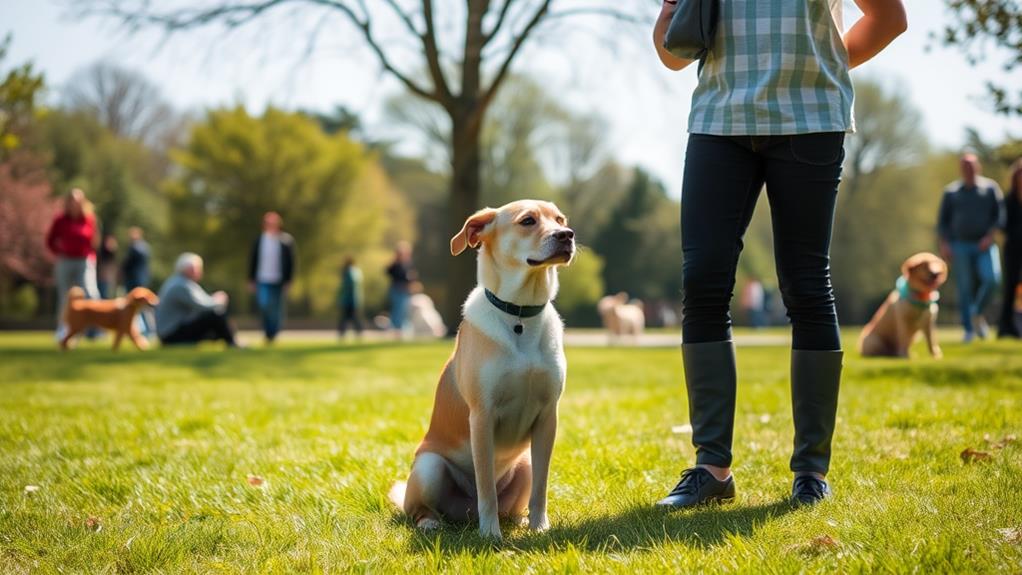To raise a well-behaved dog, start by establishing a consistent routine for feeding, walks, and playtime. Use positive reinforcement to reward good behavior, and stick to clear commands that everyone in the household follows. Socialize your dog with new environments and peers to build confidence. Create a clutter-free space for relaxation and monitor their behavior for any underlying issues. Keep training sessions short and engaging, with plenty of patience and consistency. By focusing on these strategies, you'll strengthen the bond with your furry friend. Discover even more helpful tips to enhance your dog's behavior and happiness.
Establish a Routine
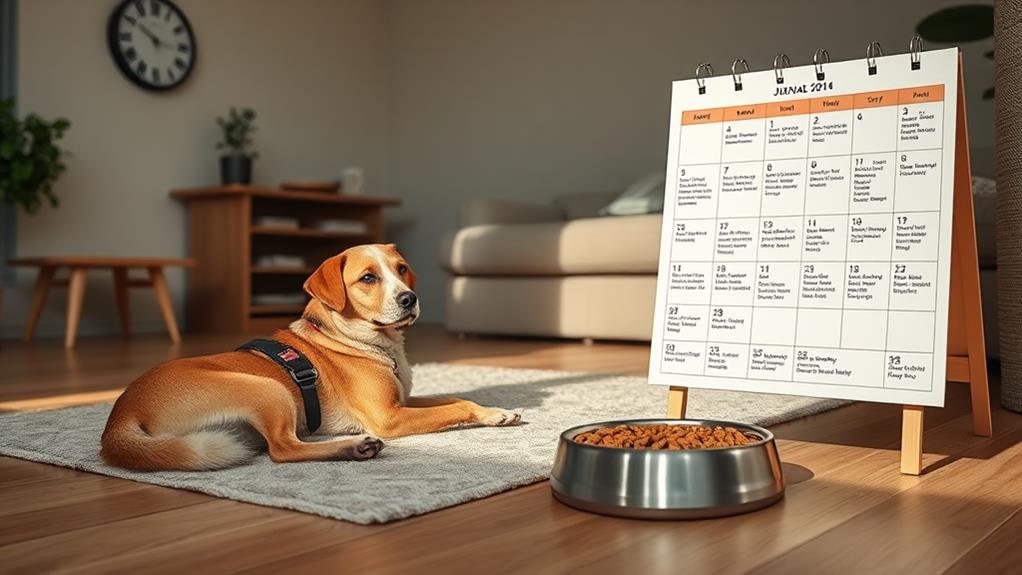
Every dog thrives on routine. Establishing a daily schedule helps your furry friend feel secure and reduces anxiety. Start by setting consistent times for feeding, walks, playtime, and bedtime. Your dog'll quickly learn what to expect, making them more relaxed and well-behaved.
Begin each day with a morning walk. This not only allows your dog to relieve themselves but also helps burn off excess energy. After their walk, feed them at the same time each day. This consistency helps regulate their digestion and keeps them happy.
Incorporate playtime into your routine, too. Schedule short sessions of interactive play or training exercises throughout the day. These activities stimulate your dog mentally while strengthening your bond.
Evening routines are just as important. Stick to a regular schedule for winding down. A calm evening walk followed by a consistent bedtime will signal to your dog that it's time to relax.
Positive Reinforcement Techniques
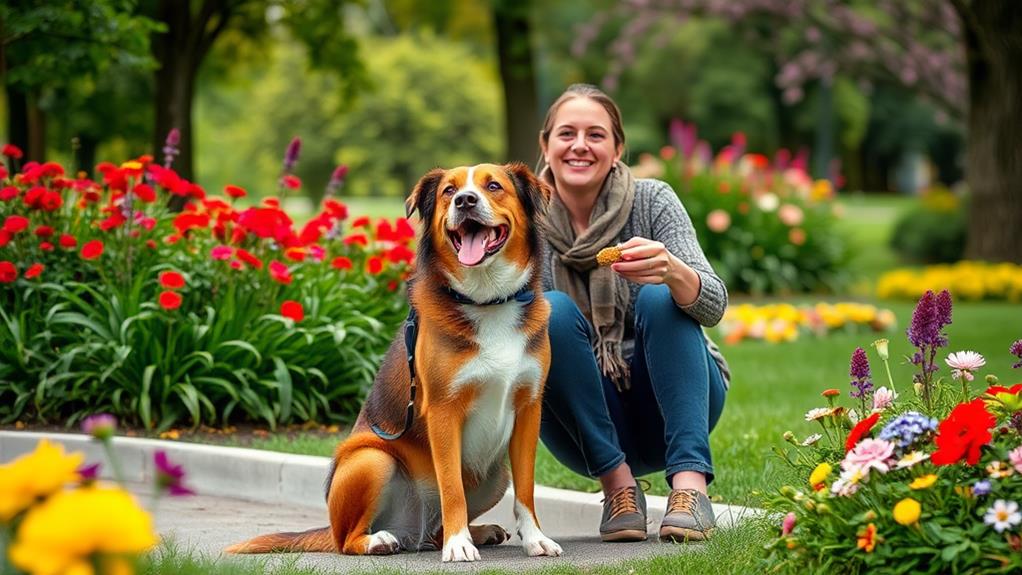
Positive reinforcement is a powerful tool for shaping your dog's behavior. By rewarding your furry friend for good behavior, you encourage them to repeat those actions. This technique works best when you catch your dog in the act of behaving well. Use treats, praise, or playtime as rewards to reinforce the behavior you want to see.
Start with clear, achievable goals. For example, if you want your dog to sit, wait until they naturally do so, then immediately offer a treat and praise them. Consistency is key here; every time they perform the desired action, reward them. This creates a positive association in their mind.
It's important to keep the rewards varied to maintain your dog's interest. Sometimes use their favorite toy, other times a tasty treat. Mix it up to keep them engaged and motivated.
Also, be patient. Some dogs may take longer to learn than others. If your dog doesn't seem to understand, break the behavior down into smaller steps and reward them for each step they master. With time and patience, you'll see your dog thriving under positive reinforcement techniques.
Consistent Commands and Cues
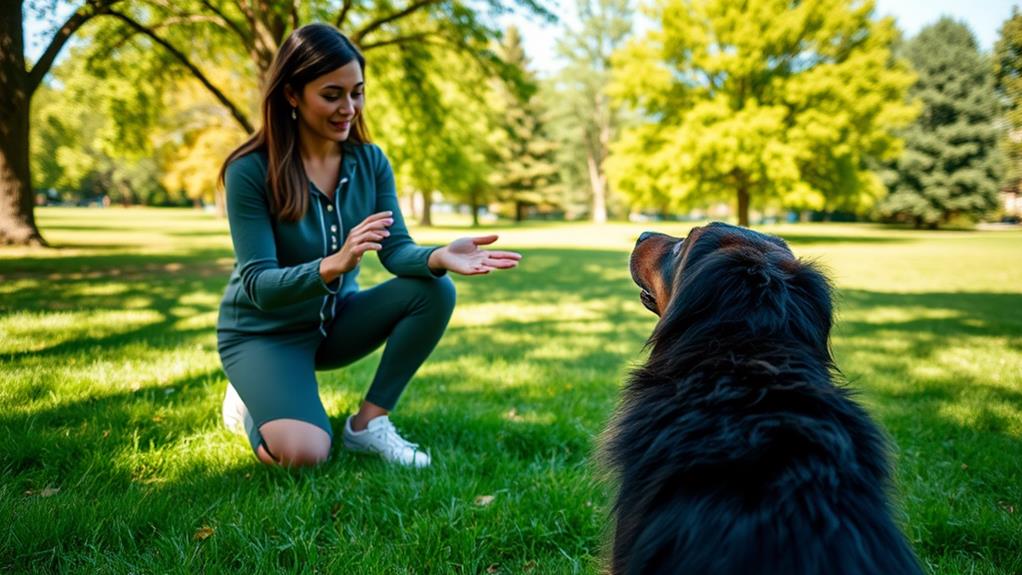
Using positive reinforcement effectively sets the stage for introducing consistent commands and cues. When you train your dog, it's essential to use the same words and gestures every time. This consistency helps your pup understand what you expect from them. For example, if you want your dog to sit, always use the same word, like "sit," and pair it with a hand signal.
Make sure everyone in your household is on the same page. If one person uses "down" while another says "off," your dog will get confused. Stick to a set of commands that everyone agrees on. Use short, clear cues, and avoid using multiple phrases for the same command.
Consistency goes beyond just words. Timing is paramount; reward your dog immediately after they follow your command. This reinforces their understanding of the behavior you want.
Practice regularly in different environments to strengthen their learning. Dogs thrive on routine, so make training a part of your daily life. By establishing consistent commands and cues, you'll foster a well-behaved dog who understands what you want and responds positively.
Socialization Opportunities
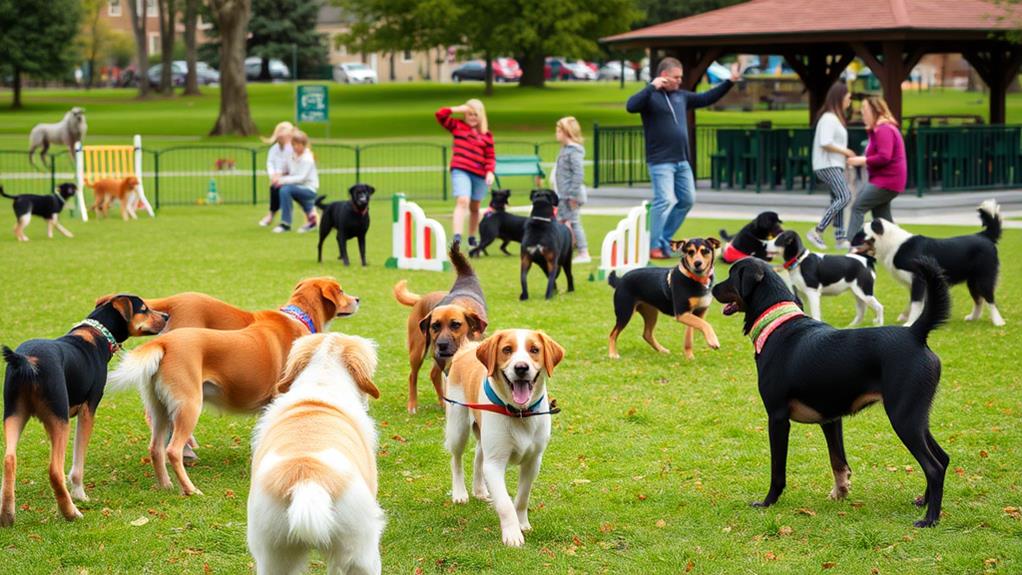
Socialization opportunities are essential for a well-rounded dog. Exposing your pup to different environments, people, and other animals helps them develop confidence and adaptability. Start early; the critical window for socialization is during the first few months of their life.
Take your dog to parks, pet-friendly stores, and doggy daycare to help them meet various sights, sounds, and smells.
Engaging in obedience classes can also provide a structured setting for socialization. These classes not only teach commands but also allow your dog to interact with others in a controlled environment. Make sure to reward your dog for positive interactions, reinforcing good behavior.
Encourage playdates with other friendly dogs. Supervised interactions can help your dog learn appropriate social cues while also getting some exercise. When meeting new people, let your dog approach at their own pace. This way, they won't feel overwhelmed.
Remember to monitor your dog's body language. If they seem anxious or scared, it's okay to step back and give them space. Gradually reintroducing them to social situations will help them build confidence over time, making them a more well-behaved companion.
Manage Your Dog's Environment
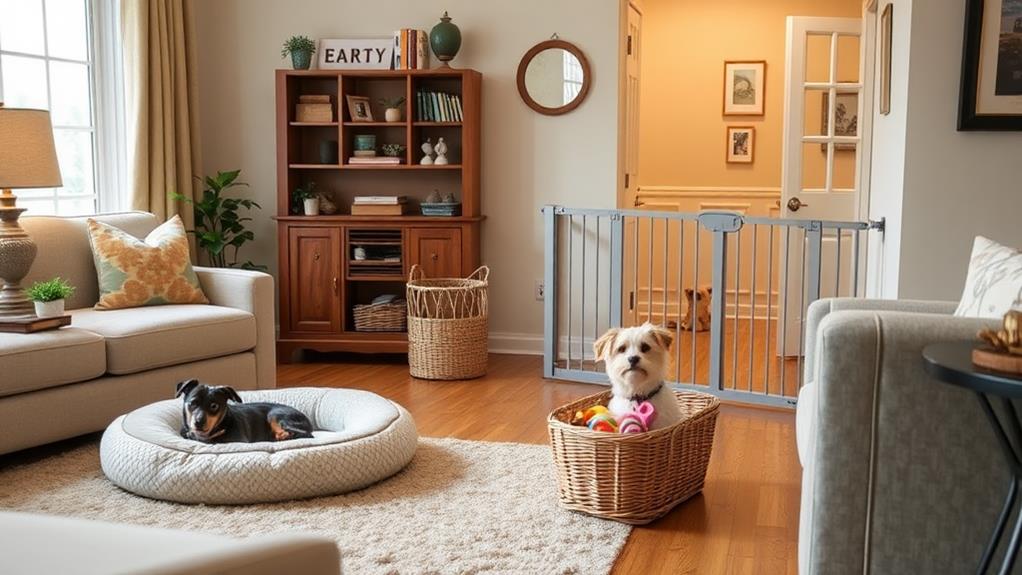
Managing your dog's environment is crucial for fostering good behavior and reducing anxiety. A well-organized space helps your dog feel secure and minimizes triggers that could lead to unwanted behaviors. Start by creating a designated area in your home where your dog can relax, free from distractions and chaos. Use baby gates or playpens to limit access to certain areas, keeping your dog safe and comfortable.
Next, remove items that could tempt your dog to misbehave. Secure trash cans, put away shoes, and keep valuable items out of reach. You'll find that a clutter-free space encourages a calm mindset for both you and your dog.
Additionally, pay attention to the noise and activity levels in your home. If you have young children or frequent visitors, consider providing your dog with a quiet retreat where they can escape if needed. This safe space will help them feel more confident.
Exercise and Mental Stimulation
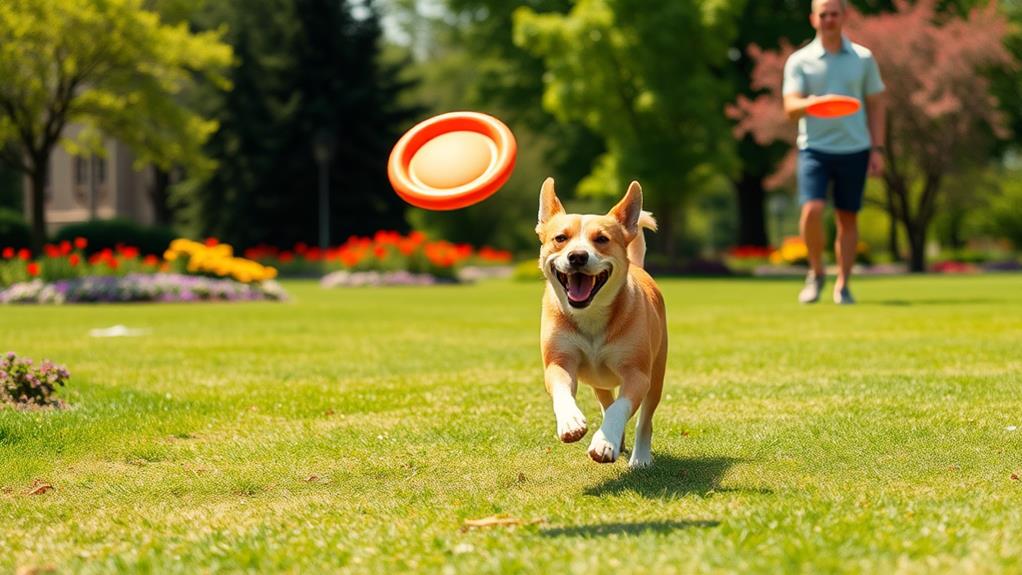
While a well-structured environment is important, regular exercise and mental stimulation are crucial for keeping your dog well-behaved and happy. Dogs need physical activity to burn off excess energy, which can prevent unwanted behaviors like chewing or barking. Aim for at least 30 minutes of exercise each day, whether it's a brisk walk, a game of fetch, or a fun romp at the park. Mixing up activities can keep things exciting for you both.
Mental stimulation is just as indispensable. Engage your dog's mind through interactive toys, puzzle feeders, or training sessions. Teaching your dog new tricks or commands not only strengthens your bond but also challenges their brain. You can also set up scavenger hunts around your home or yard to encourage problem-solving.
Don't forget about socialization! Playdates with other dogs or visits to dog parks can provide both exercise and mental engagement. By regularly incorporating these activities into your dog's routine, you'll help them stay balanced, satisfied, and well-behaved. Remember, a tired dog is a happy dog, so make exercise and mental stimulation a priority in their daily life.
Addressing Behavioral Issues
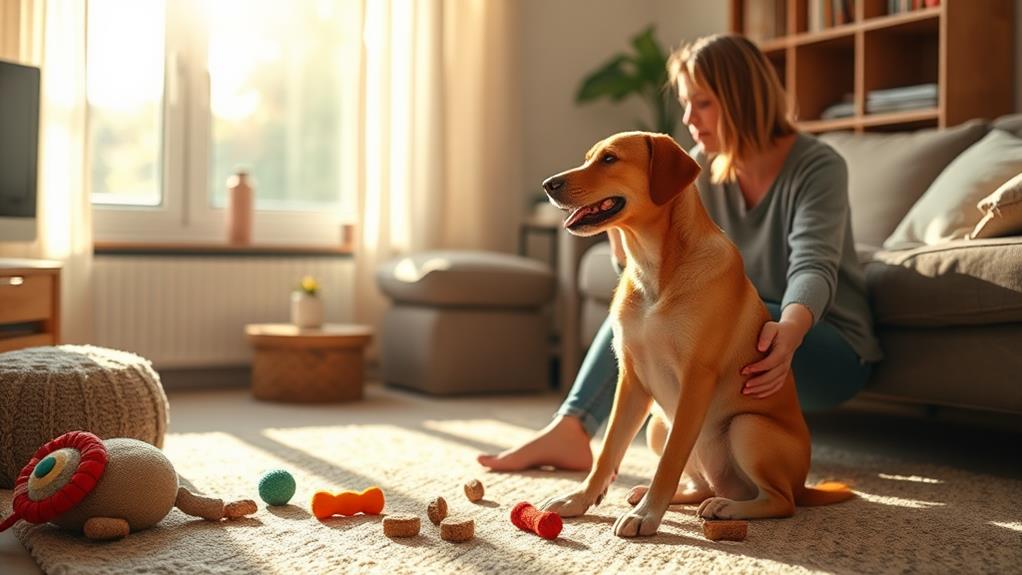
When it comes to addressing behavioral issues, identifying the root cause is essential. Dogs often act out for various reasons, and understanding these triggers can help you find effective solutions. Start by observing your dog's behavior in different situations. Look for patterns that may indicate underlying issues.
Consider these potential causes of behavioral problems:
- Lack of exercise: Insufficient physical activity can lead to pent-up energy and frustration.
- Anxiety or fear: Stressful environments or past traumas can make your dog anxious, resulting in destructive behaviors.
- Boredom: A dog that isn't mentally stimulated may engage in unwanted behaviors out of sheer boredom.
- Health issues: Sometimes, medical problems can manifest as behavioral changes, so consult a vet if you notice sudden changes.
Once you pinpoint the cause, you can implement targeted strategies. Whether it's increasing exercise, providing a safe space, or engaging in interactive play, addressing the root of the problem will help your dog feel more secure and well-adjusted. With patience and consistency, you can turn undesirable behaviors into positive ones, enhancing your bond with your furry friend.
Training Sessions Duration
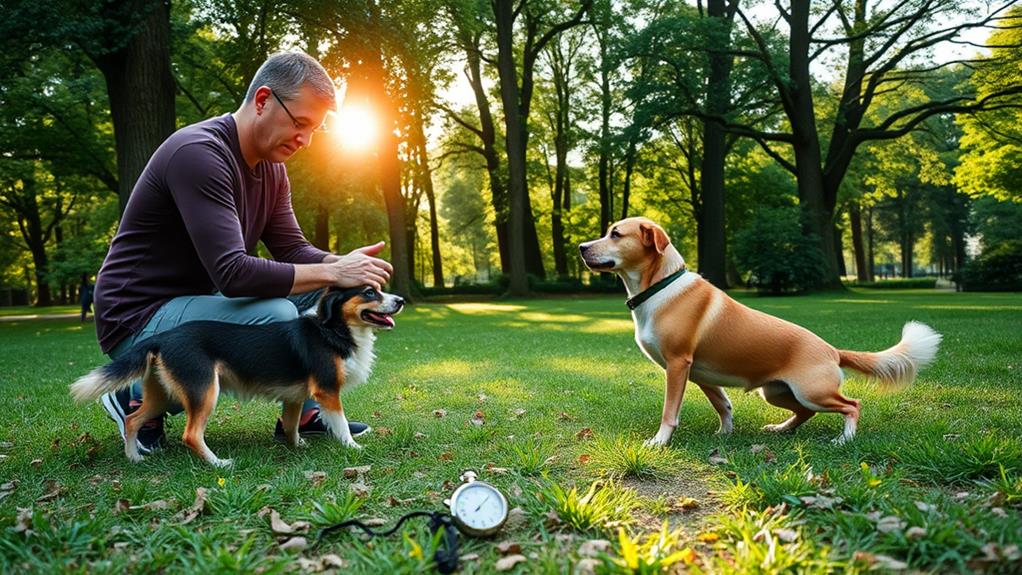
To guarantee your dog gets the most out of training sessions, it's essential to keep their duration in mind. Dogs, especially young ones, have short attention spans. Ideally, aim for sessions lasting about 5 to 15 minutes. This keeps your dog engaged without overwhelming them. You can always conduct multiple short sessions throughout the day instead of one long one.
Pay attention to your dog's body language during training. If they start wandering off or losing interest, it's a sign you need to wrap things up. Ending on a positive note is imperative, so always finish with a command they know well or a fun activity. This reinforces their desire to participate in future sessions.
As your dog becomes more accustomed to training, you can gradually increase the duration. However, always be mindful of their energy levels and focus. If you notice signs of fatigue or boredom, it's time to stop. Consistency is key, so try to schedule training sessions at the same times each day, ensuring your dog knows when to expect them. This routine can enhance their learning experience and foster a stronger bond between you two.
Patience and Consistency
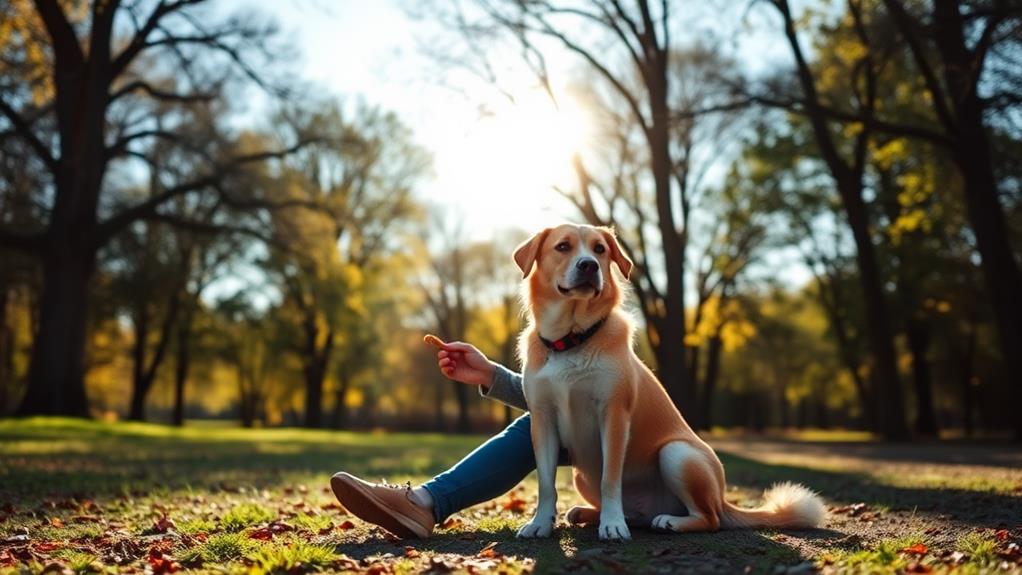
Training your dog effectively requires more than just short sessions; it demands patience and consistency. Dogs, like humans, learn best when they're given time to absorb new commands and behaviors. If you expect quick results, you might find frustration creeping in, which can hinder your progress.
To foster a productive training environment, keep these key points in mind:
- Set Realistic Goals: Understand that mastery takes time. Break down commands into smaller, achievable steps.
- Stick to a Routine: Consistency helps your dog understand what's expected. Use the same cues and commands during each session.
- Celebrate Small Wins: Acknowledge your dog's progress, no matter how minor. Positive reinforcement keeps them motivated.
- Be Patient with Mistakes: Remember, errors are part of the learning process. Instead of reacting negatively, redirect their focus and try again.
Building a Strong Bond
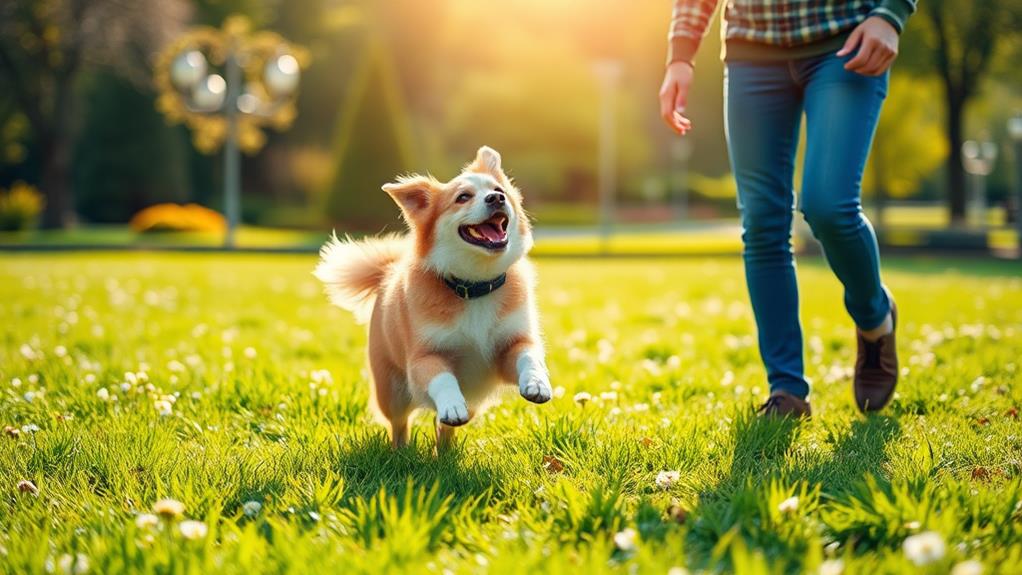
A strong bond between you and your dog is essential for effective training and a happy life together. When your dog trusts you, they're more likely to listen and respond positively to commands. Here are some simple ways to strengthen that connection:
| Activity | Benefits | Frequency |
|---|---|---|
| Daily Walks | Builds trust and confidence | At least once a day |
| Training Sessions | Enhances communication | 5-10 minutes daily |
| Playtime | Fosters joy and bonding | Several times a week |
Engaging in daily walks not only provides exercise but also allows you to explore together, reinforcing trust. Short training sessions can enhance communication and provide mental stimulation. Remember to keep it positive; use treats and praise to motivate your dog.
Lastly, incorporate playtime into your routine. Whether it's fetch, tug-of-war, or simply chasing each other around the yard, these moments create lasting memories and strengthen your bond. By consistently investing time and effort into these activities, you'll build a strong, loving relationship with your canine companion.
Frequently Asked Questions
How Do I Choose the Right Dog Breed for My Lifestyle?
Choosing the right dog breed for your lifestyle means considering your activity level, living space, and family dynamics. Research breeds that match your energy and commitment, and always think about grooming needs and potential health issues.
What Should I Do if My Dog Is Fearful of Strangers?
When your dog cowers at strangers, your heart races. First, stay calm. Gradually introduce them to new people, using treats and praise. This builds trust, helping your furry friend feel secure and less fearful over time.
Can Older Dogs Learn New Commands Effectively?
Yes, older dogs can learn new commands effectively! Their experience and maturity often help them focus better. With patience, consistency, and positive reinforcement, you'll see progress and deepen your bond with your furry friend.
How Do I Prevent My Dog From Barking Excessively?
Think of barking as a dog's loudspeaker. To curb excessive barking, you'll want to identify triggers, reinforce quiet behavior, and provide engaging activities. Consistency and patience will turn down the volume on your dog's vocalizations.
What Should I Do if My Dog Is Not Food Motivated?
If your dog's not food motivated, try using toys or praise as rewards. Discover what excites them—maybe playtime or social interaction. Experiment with different incentives to find what truly engages your furry friend.
Conclusion
In the journey of dog companionship, think of yourself as the captain steering the seas of training. By establishing routines, using positive reinforcement, and fostering socialization, you're creating a harmonious relationship. Remember, consistency and patience are your guiding stars, illuminating the path to a well-behaved pup. As you tackle behavioral issues and celebrate progress, your bond will strengthen, turning your dog into the loyal companion you've always dreamed of. So set sail and enjoy the adventure!

